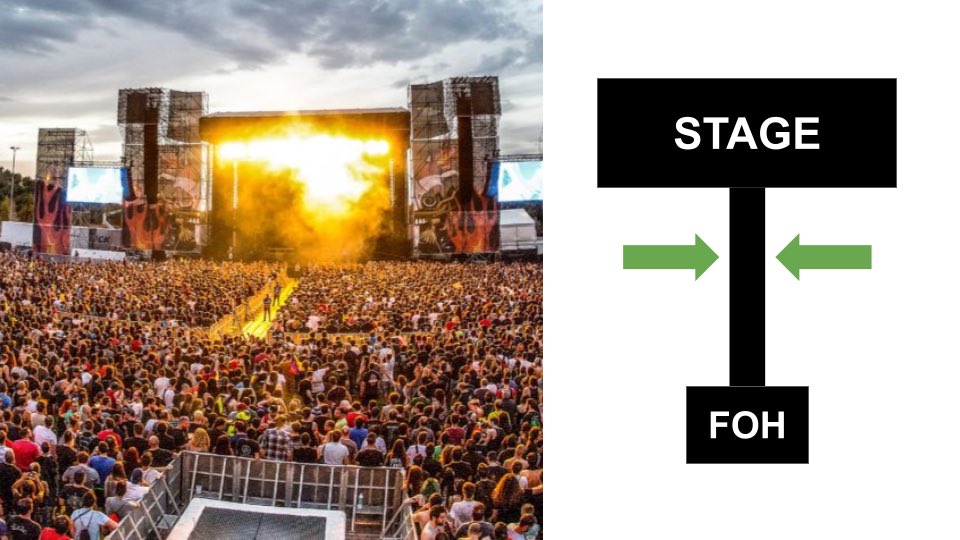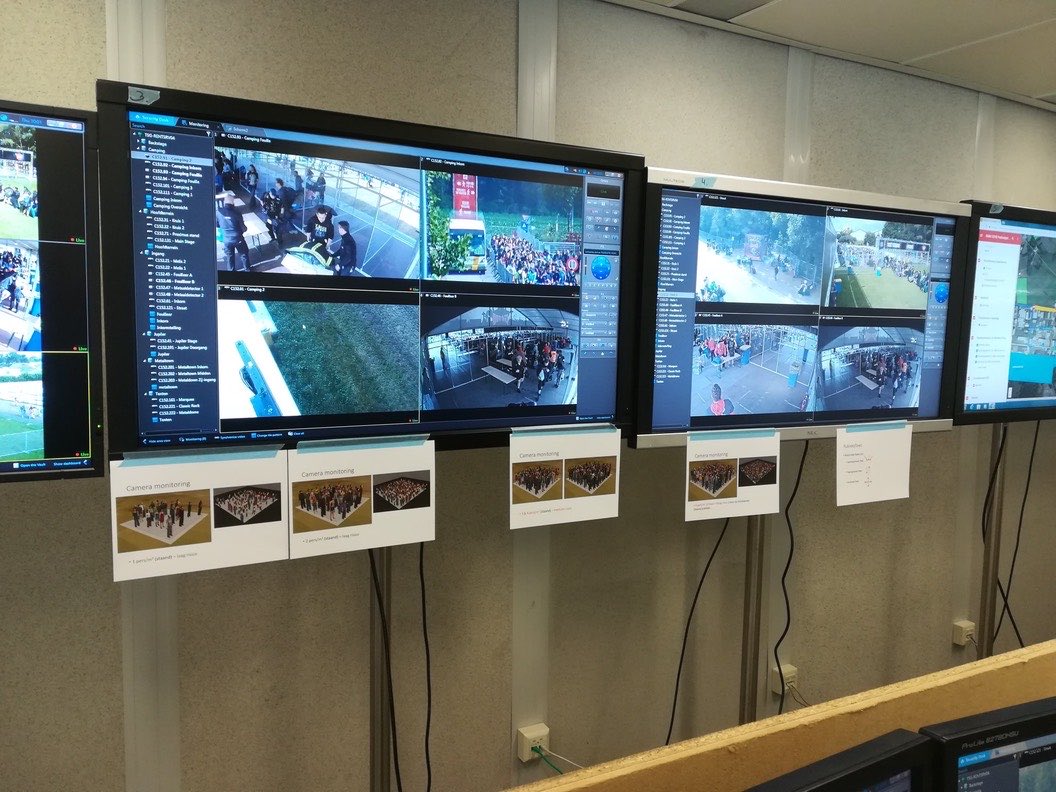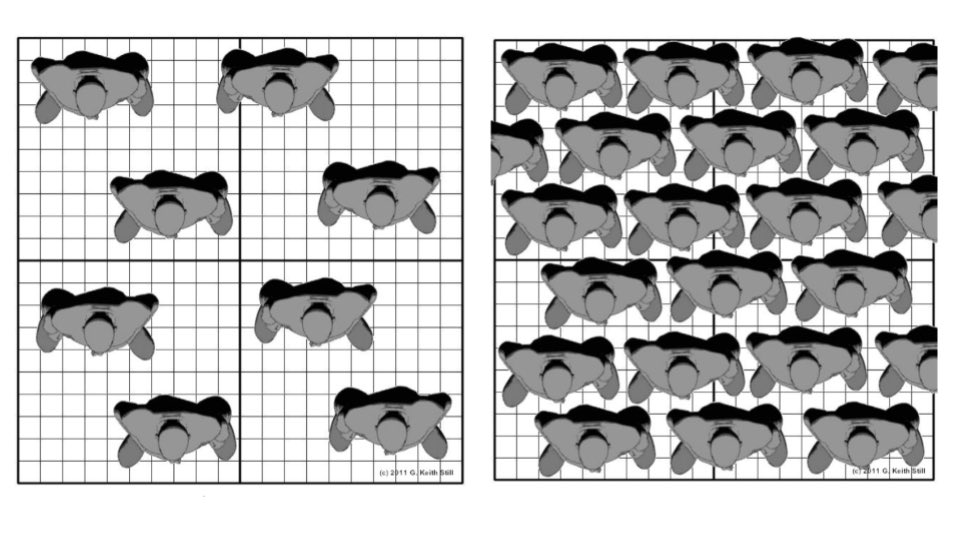What has happened in Houston is incredibly sad.
I spent 5 years working in crowd safety management for large-scale music festivals.
I don't know the specifics of the situation. But here are some of the critical factors we’d assess when planning major shows.
I spent 5 years working in crowd safety management for large-scale music festivals.
I don't know the specifics of the situation. But here are some of the critical factors we’d assess when planning major shows.
Barricades are used to reduce and re-direct crowd pressure.
The most widely used are Mojo barriers (interlocking aluminum panels below).
Barrier layout depends on the event and capacity, but the designs most common are ‘D-brricades’ and ’T-barricades’.
The most widely used are Mojo barriers (interlocking aluminum panels below).
Barrier layout depends on the event and capacity, but the designs most common are ‘D-brricades’ and ’T-barricades’.

D-barricades create a protected pit area directly in front of stage. This ensures crowd surges cannot transfer all the way to the front.
Often the wilder fans will camp out in the D. This gives security a controlled and clearly defined area. We would intentionally underfill it.
Often the wilder fans will camp out in the D. This gives security a controlled and clearly defined area. We would intentionally underfill it.

T-barricades split the crowd down the middle, this is for productions with very wide stages (think AC/DC, Foo Fighters).
This prevents lateral crowd movements but it also introduces pinch points in the two front corners at centre-stage.
This prevents lateral crowd movements but it also introduces pinch points in the two front corners at centre-stage.

Let’s also consider weather.
One of the tragedies that is constantly referenced in academic research related to crowd disasters is Roskilde.
One of the tragedies that is constantly referenced in academic research related to crowd disasters is Roskilde.

In 2000, Pearl Jam headlined the Danish festival. A confluence of factors contributed but heavy rain caused the clay ground to turn into a muddy quicksand.
People that lost their footing in the crowd surges could not get back up. Eventually nine people were killed.
People that lost their footing in the crowd surges could not get back up. Eventually nine people were killed.

The would lead to a number of safety measures introduced at festivals across Europe shortly after. One of which being more widespread use of plastic matting (ground protection) in front of stage areas.
Pearl Jam stopped playing shows that had a general admission standing area.
Pearl Jam stopped playing shows that had a general admission standing area.

Roskilde now uses a quad-barricade design.
It’s a four-pen system with tightly controlled capacities and multiple points of entry/egress.
Nothing is left to chance now.
It’s a four-pen system with tightly controlled capacities and multiple points of entry/egress.
Nothing is left to chance now.

Dehydration.
Seems minor, but it means you’re more likely to pass out when in a tightly compressed crowd.
It’s manageable if it’s 1 or 2 ppl, but when it’s >50 security and medical are quickly overwhelmed.
It’s negligent not to provide free water stations for temps >30*C
Seems minor, but it means you’re more likely to pass out when in a tightly compressed crowd.
It’s manageable if it’s 1 or 2 ppl, but when it’s >50 security and medical are quickly overwhelmed.
It’s negligent not to provide free water stations for temps >30*C
When I was young I begged my parents to let me see Limp Bizkit headline a festival. They said- “it’s too dangerous".
I was devastated.
The next morning we would learn that a 16yr old woman (Jessica Michalik) was crushed to death in the mosh pit.
I was devastated.
The next morning we would learn that a 16yr old woman (Jessica Michalik) was crushed to death in the mosh pit.

It shook the Australian live music industry. The annual festival (Big Day Out) was a rite of passage among teenagers.
If it could happen here, it could happen anywhere.
If it could happen here, it could happen anywhere.
Limp Bizkit, although cleared of criminal wrongdoing, would face a civil lawsuit from the parents of the deceased with even their own insurer suing them and denying coverage for inciting the crowd.
It would haunt the band.
Quote from guitarist Wes Borland👇
It would haunt the band.
Quote from guitarist Wes Borland👇

11yrs later I went on tour with Limp Bizkit as they returned to Australia for the first time since the incident as part of Security Ops.
Besides looking at all the factors above, we added stage-mounted CCTV cameras as an extra layer.
Besides looking at all the factors above, we added stage-mounted CCTV cameras as an extra layer.
Most major festivals today will have a control room monitoring cameras placed around the site and at main stages.
For sets after sunset, it’s a must. The naked eye simply can’t detect patrons in distress from a distance vs. HD night-vision.
For sets after sunset, it’s a must. The naked eye simply can’t detect patrons in distress from a distance vs. HD night-vision.

When you detect that ppl in the crowd are in danger you signal to stage managers to stop the show.
I've had to do this twice (Slipknot and The Offspring). In both cases the show was temporarily stopped, bands left the stage while the problem was fixed. Zero injuries, thankfully.
I've had to do this twice (Slipknot and The Offspring). In both cases the show was temporarily stopped, bands left the stage while the problem was fixed. Zero injuries, thankfully.

If the band/artist doesn’t take the threat seriously, they can turn a simple process (stop, assess, re-start) into a disaster.
Because the artist controls the crowd.
Promoters/venues should study footage of performers they contract to understand what risks need to mitigated.
Because the artist controls the crowd.
Promoters/venues should study footage of performers they contract to understand what risks need to mitigated.
Scheduling plays a big role in crowd safety at festivals.
You want attendees to be evenly dispersed across multiple stages. If 80+% converge on a single stage, unless it’s the Pyramid at Glastonbury, your resources will be stretched.
You want attendees to be evenly dispersed across multiple stages. If 80+% converge on a single stage, unless it’s the Pyramid at Glastonbury, your resources will be stretched.
But having multiple headliners of similar stature playing simultaneously is a way to ensure that you don’t run into this problem.
e.g. 2011 ACL schedule- headlining sets from Kanye West and Coldplay coincide.
e.g. 2011 ACL schedule- headlining sets from Kanye West and Coldplay coincide.

Crowd density.
The number of people per sq metre or foot in a static crowd is a useful thing to monitor.
Anything above 5ppl/sq m and you’re in trouble.
Here is a comparison of 2ppl/sq metre vs. 5ppm/sq metre:
The number of people per sq metre or foot in a static crowd is a useful thing to monitor.
Anything above 5ppl/sq m and you’re in trouble.
Here is a comparison of 2ppl/sq metre vs. 5ppm/sq metre:

When you combine extreme crowd density levels with confined spaces, there simply isn’t anywhere for pressure to be alleviated.
For this reason you never want a stage place in a narrow corridor like a street.
For this reason you never want a stage place in a narrow corridor like a street.

Ticketing.
Festivals have a bottom-line. It’s an incredibly hard business to get right. Most fail after a few years.
What determines a festival’s capacity is usually related to licensing, emergency exits, venue layout, etc.
Festivals have a bottom-line. It’s an incredibly hard business to get right. Most fail after a few years.
What determines a festival’s capacity is usually related to licensing, emergency exits, venue layout, etc.
Things that weren’t usually part of that calculation- demographics.
Elton John will attract people with a different level of risk tolerance than that of Linkin Park (RIP Chester).
You want to reduce the capacity for such situations.
Elton John will attract people with a different level of risk tolerance than that of Linkin Park (RIP Chester).
You want to reduce the capacity for such situations.
Again, I don’t know the specifics of what happened in Houston and am not intending to pass judgement on anyone.
I simply want to share what I know so that people can ask better questions of organizers.
I simply want to share what I know so that people can ask better questions of organizers.
• • •
Missing some Tweet in this thread? You can try to
force a refresh






















